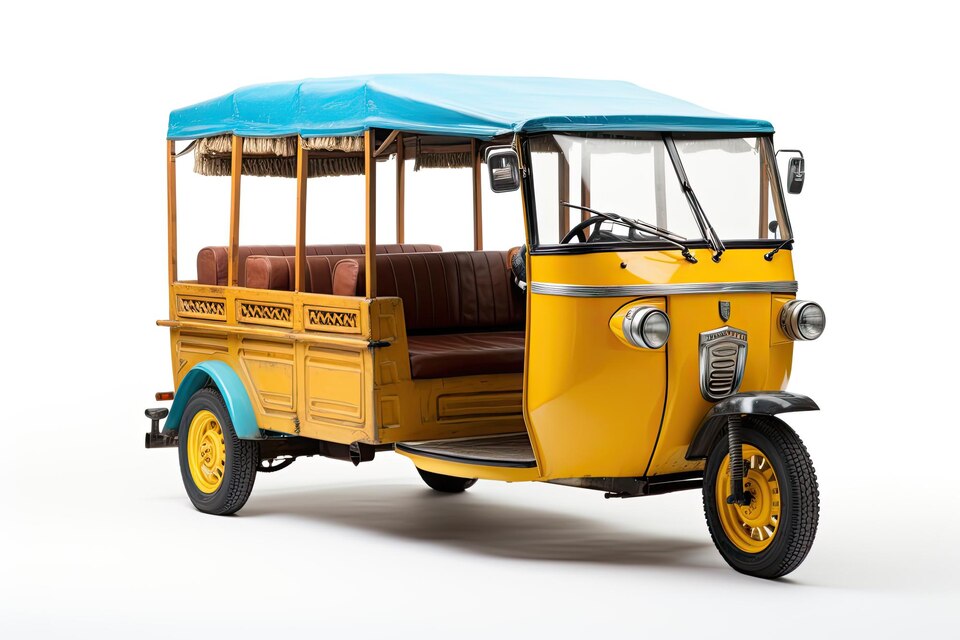The 4 Most Important Tips for Caring for Your Electric Rickshaw Battery
The electric rickshaw is a mode of transportation and has gained the masses’ acceptance. These automated rickshaws run on electrical motors, which are powered by a battery under the front seat of the rickshaw. A drive shaft establishes a connection between the wheels and the motor. The motor causes a reciprocatory movement that rotates the wheels of the three-wheeler, causing it to move forward. The power channeled using the motor makes the three-wheeler go faster or slower.
Regulation of the motor, the most basic but important aspect of electric three-wheeler operation, requires an adequate power supply. E rickshaw lithium ion battery have become a more efficient choice for electric three-wheeler owners. A battery, integral to the regulation, requires maintenance measures from the recipient. A person can provide the required maintenance to the battery through general care to ensure its seamless functionality.
Lithium Ion Batteries for E-Rickshaws-Conceptual Overview
Lithium-ion batteries are rechargeable batteries, and the charges move from anode to cathode when the charging process continues. However, the converse happens when the battery provides the power to the three-wheeler and discharge of the battery begins. These batteries offer a higher energy density than others available in the market, making them a sensible choice for three-wheeler owners. The durability of this battery is a significant factor that has made it a popular choice.
Self-discharge is a concern faced by three-wheeler owners, reducing the efficiency of the automobile by decreasing the tenure of uninterrupted power supply. However, this will not be the case with lithium-ion batteries. The low discharge rate of lithium-ion batteries makes it the best choice for electric three-wheeler owners. Lithium-ion batteries need not be drained out of charge to recharge them with efficacy and safety.
Lithium-ion batteries have an evolved operational framework that protects them from overcharging and overheating. The cost-efficient price of lithium-ion batteries is worth consideration.
Maintain the Lithium-ion Battery for Three-Wheelers With General Care
Despite lithium-ion batteries not requiring additional efforts from recipients for their seamless functionality, a few general precautionary measures can enable these batteries to live up to their shelf life. Following are the steps recipients can take to ensure the seamless functionality of these batteries:-
Charging the Battery Regularly
Regular charging enables the recipient to operate the electric three-wheeler without additional trouble and provides a regulation that stimulates the overall functioning of the battery. Charging the batteries regularly provides enough power to the battery, which prevents it from deep discharge and increases the lifespan of the battery. Regular charging also prevents batteries from lithium plating that develops a deposit on the negative electrode and damages the battery by adversely affecting its shells. A regularly charged battery has a low risk of developing issues relating to overheating of the battery’s cells and maintains the battery’s equilibrium. Taking the required preventive measures is necessary for batteries to maintain their seamless functionality.
Avoid Overcharging
Charging a battery enables it to function at its optimal capacity. However, the case is not the same with the overcharging of batteries, which adversely affects their vital components, causing inefficient functionality. Overcharging the battery causes the expansion of electrolytes, making the battery swell or bulge. It also causes leaks of electrolytes and leads to a breakdown. Nevertheless, overcharged batteries are prone to overheating and causing fire. The battery’s capacity receives an unfavorable fair by overcharging, making the battery inefficient for use.
Keep the Battery in Cool and Dry Place
A cool and dry place enables the patron to maintain the equilibrium of the battery and avoid the circumstances due to which the battery’s electrolytes become unstable and may lead to dysfunctionality or hazard. A moist environment causes corrosion in the battery’s electrodes, causing them to lose their conductivity. Taking the required precautionary measures while charging also protects the battery’s vital components.
Handle the Battery With Precaution
While lifting and reloading the battery for recharging and reuse, one must employ adequate force to ensure the battery’s well-being. It increases the likelihood of the battery to remain intact. Moreover, mishandling leads to subjugation of force or damage due to impact or collision.
Concluding Remarks
A lithium-ion battery facilitates the seamless functionality of three-wheelers for a longer tenure. Taking the required preventive measures allows a person to maintain the functionality of the battery and avoid any hazardous situation. Likraft is a platform that provides its customers with the best e-rikshaw battery in India.


